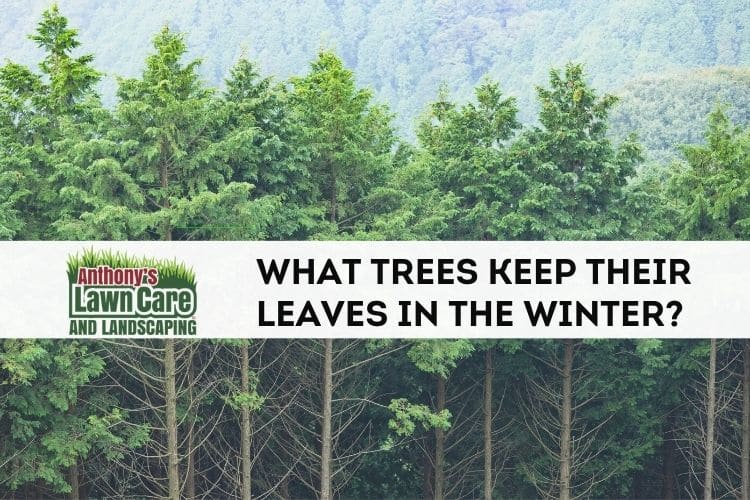Which trees in Indiana keep their leaves in the winter? There are a number of reasons homeowners may be curious to know the answer to this question. Maybe they are curious because they want to know if a tree without leaves should have leaves, and is therefore sick or dying. Maybe they are considering planting a new tree and want one that will be full all year long. Or maybe they want to just get a better idea of what to expect as they look out the window this winter.
Tree basics
First, let’s start with some very basic tree terminology. Trees are separated into two basic categories — evergreen (also known as conifers), which keep their leaves in the winter, and deciduous, which do not.
If you want to get technical, there are also some conifers, although rare, called deciduous conifers, like the bald cypress, which lose their leaves in the cooler months. So evergreen and conifer are not completely synonymous, even if the terms are generally used interchangeably.
But if you are looking for Indiana trees that keep their leaves during the winter, you are looking for evergreens, most of which are conifers. These trees have their seeds within a cone (hence “conifer”), a common example being a pine cone, not the flowers of deciduous trees. Their wood tends to be soft, and their leaves are needle-like.
Indiana evergreen trees
Our state has a lot of great native varieties of tree, as well as others that grow well here but were brought in. We will name a few below that are known to thrive in this environment. The big families of conifers are spruce, pine, cypress, cedar, hemlock, juniper, yew and fir. Some specific ones we have in our state include:
- Blue spruce: While sometimes called the Colorado spruce, because it is native further west, the blue spruce adapts well to Indiana weather. Some popular varieties, like the Fat Albert, are popular for ornamental trees due to their smaller size and white-blue needles.
- Eastern red cedar: Native to the midwest, mature eastern red cedars grow to 50 feet tall, and their red bark is what gives them their name. Red cedars grow slowly but are adaptable to many types of soil.
- Virginia pine: Sometimes known as the Jersey pine, the Virginia pine is native to the east coast, but adapts well to the midwest. It grows to 60 feet and thrives even in poorer soils.
- Eastern white pine: While considered more rare in Indiana, the eastern white pine grows in most of the surrounding states abundantly. It is a large pine and is thought to be very attractive, earning the name the “tree of peace” in England.
- Balsam fir: These firs, native to northern North America, are a classic “Christmas tree,” maybe second only to the Fraser fir, its close cousin from further south. They have a nice aroma and produce a resin, or “balsam.”
- Norway spruce: While native to Europe, the Norway spruce adapts well to cool climates like the midwest and is an attractive, large, fast-growing evergreen.
- Eastern hemlock: This tree is sometimes called the Canadian hemlock, despite being native to the United States as well, and even being the state tree of Pennsylvania. It is known for growing very tall and living a long life.
Call Anthony’s for more details on evergreens in Indiana
If you are interested in Indiana evergreens because you want to plant one on your property, Anthony’s in Bloomington serves the wider area and can help you choose, plant and maintain the perfect evergreen. Give us a call at (812) 345-5694 to learn more.


Recent Comments